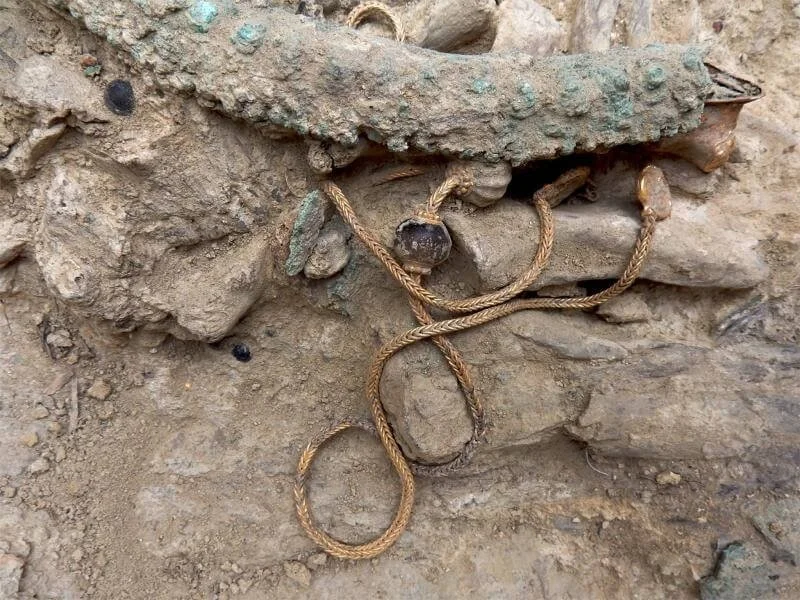In the final days of this season's excavations at the prehistoric salt mining and urban center "Provadia - Solnitsata" in Northeast Bulgaria, archaeologists discovered a 2,500-year-old Scythian sceptre, according to Vasil Nikolov, who is in charge of the project. The scepter was discovered in a cemetery that Kalina Samichkova and Violeta Stoitsova investigated.
According to Nikolov, the excavated pit is distinct from those already discovered. He emphasized the rarity of Scythian tombs in modern-day Northeastern Bulgaria. Only four or five have been found thus far, he continued.
The burial of the Scythian warrior is shaped like a hollowed-out boot. It was reportedly dug later, but when workers came across the man's missing upper skeleton and skull, they halted right away, according to Nikolov. The scholar referred to the bone scepter as "an incredible achievement of the art of that time" and archaeologists have finally discovered it. They also discovered the remains of a horse, a tiny dog, and a turtle in addition to the human bones. The iron knife that was used to bury the warrior has corroded over time and is in very bad shape.
According to Nikolov, the Scythians were a steppe and semi-steppe people who arrived on the Danube in the seventh century BC. There is no proof that they engaged in combat with the people after entering the area that is now Bulgaria. After the fifth century BC, there is information indicating that they engaged in conflict with the Thracians. Scientists assert that during the Early Bronze Age, the Scythians interred their dead in pre-existing mounds. Nikolov noted that this is the first time a grave has been discovered in a settlement mound.
Bone cutting was a highly skilled tradition that the Scythians had. Nikolov remarked that the sceptre was evidence of the masters' talent and that it most likely belonged to a commander of a small military force. The horse's bones in his tomb imply that the deceased was a cavalryman.
Its length is 39 centimeters. Two pieces of bone that have been cemented together form the handle. The sceptre's link between the head and handle is expertly made. From one angle, it appears to be an eagle's beak, but the ancient carver sculpted a human figure on which the beak appears to be a hat.
“I consulted one of the best experts on Scythian culture, the director of the Varna History Museum, Igor Lazarenko, but he, too, does not know of such a bone sceptre having been found before,” Nikolov said. “Those found so far are usually cruciform, with an ornithomorphic upper part. Most often the craftsmen carved an eagle, because this bird is part of the Scythian religious-mythological system,” he added.







